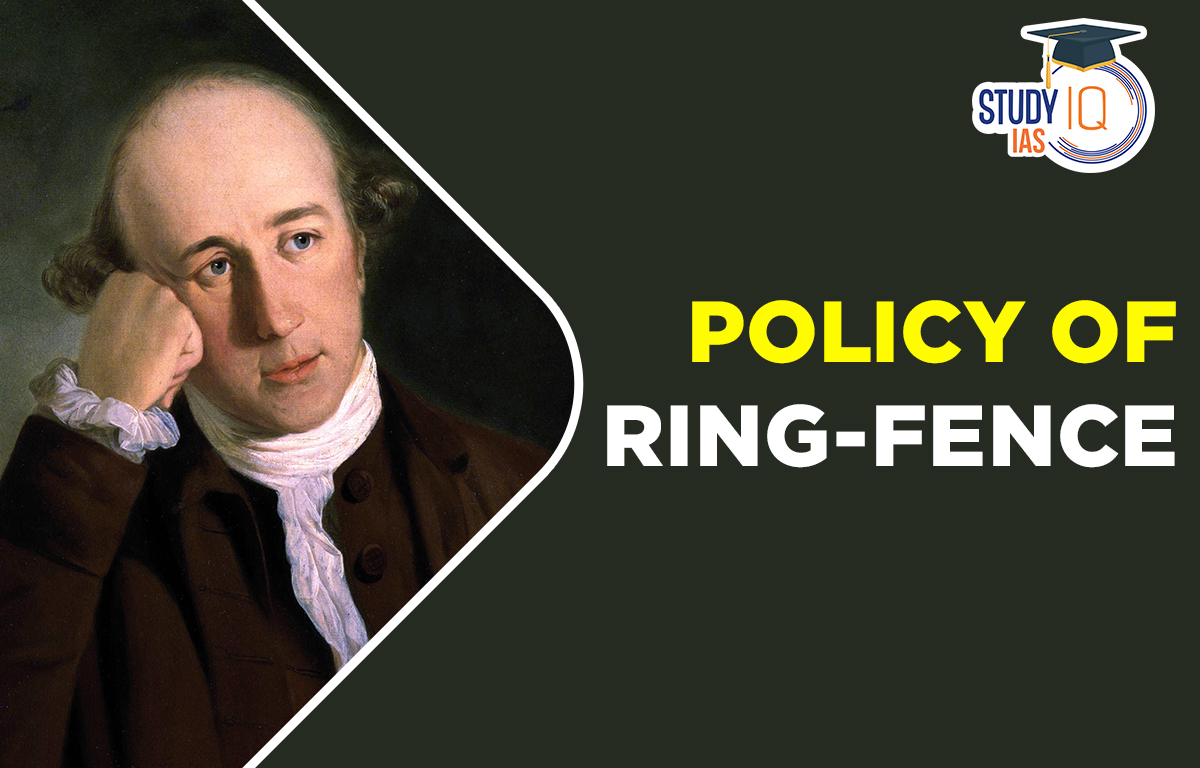Table of Contents
Policy of Ring of Fence
Warren Hastings established the Policy of Ring of Fence (1765–1813) to establish buffer zones and safeguard the Company’s frontiers. In order to safeguard their own territories, it was often their policy to defend the boundaries of their neighbors. The ring-fence states were obligated to retain subsidiary armies that were to be organized, outfitted, and led by Company commanders who were to be compensated by these rulers.
Since the British only considered expediency, their relationship with the Indian states evolved with time. The British never lost sight of their desire to rule an empire. They were therefore constrained in how they interacted with native governments by their own interests, which evolved through time. The discussion of the Ring of Fence Policy (1765–1813) in this article would be beneficial for students studying Modern Indian History for the UPSC Civil Service Exam.
Policy of Ring Fence in India History
During this time, the British treated local states like independent nations. At the time, they had not yet attained the status of India’s absolute power. As a result, they could not claim complete sovereignty over the native kings who became their supporters or that they were unable to interfere everywhere.
The first and second Maratha Wars, the treaties with Avadh and Hyderabad, the wars against Mysore and the peace with the Hindu monarch ending the fourth Mysore War, as well as the treaty of Amritsar with Ranjit Singh, were all fought during this time. Naturally, the Wellesley Wars and related agreements with numerous monarchs made the British the dominant force in India, while their allies became subordinate rulers.
Policy of Ring Fence Establishment
In order to preserve their own holdings, Warren Hastings devised the Ring-Fence policy, which involved guarding the borders of their neighbours. This was echoed in the conflict between the East India Company and the Kingdom of Mysore and the Marathas. The Company undertook to organize Awadh’s defence in order to assure Bengal’s security because the Marathas and Afghan invaders posed the biggest threat.
The rulers of such a kingdom paid for the maintenance of the troops that the East India Company dispatched to strengthen the fortifications of its allies. In this sense, the East India Company would be necessary for the local ruler’s defence. During the “Policy of Ring Fence” era, the British did not recognize native rulers as having any sort of suzerainty over them; instead, they treated them as independent nations with the freedom to conduct their own internal affairs, with the exception of the Hindu ruler of Mysore, with whom they entered into treaties on an equal footing.
The ring fence policy, which aimed to lessen states’ dependency on the British administration in India, was extended by Wellesley’s subsidiary alliance program. The Maratha, Awadh, and other powerful nations such as Hyderabad accepted subsidiary partnerships. British dominance was thus entrenched.
Policy of Ring Fence UPSC
One of the many strategies the British used to establish their dominance in the Indian provinces was the Policy of Ring Fence. The subsidiary alliance system, Policy of Subordinate Isolation, Policy of Subordinate Union, Policy of Equal Federation, etc. was some of the other related policies. This article contains comprehensive information regarding the Ring Fence Policy for UPSC Exam Preparation.


 Jallianwala Bagh Massacre, Date, History...
Jallianwala Bagh Massacre, Date, History...
 Important Lakes of India, State wise and...
Important Lakes of India, State wise and...
 Buddhism History, Origin, Sect, Councils...
Buddhism History, Origin, Sect, Councils...





















